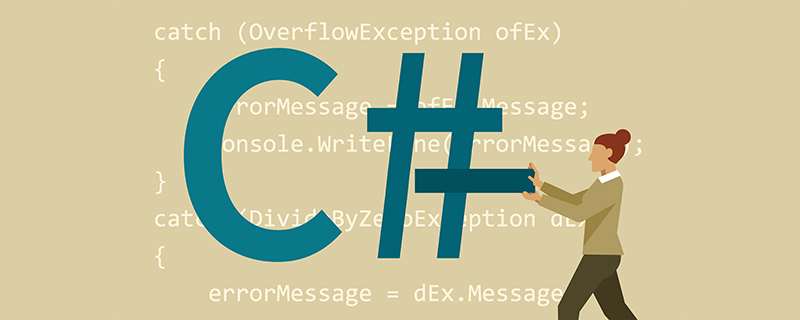c#如何防止sql注入?
对于网站的安全性,是每个网站开发者和运营者最关心的问题。网站一旦出现漏洞,那势必将造成很大的损失。为了提高网站的安全性,首先网站要防注入。

下面我们给大家介绍C#防止sql注入的几种方法:
方法一:
在Web.config文件下面增加一个如下标签:
< appSettings> < add key="safeParameters" value="OrderID-int32,CustomerEmail-email,ShippingZipcode-USzip" /> < /appSettings>
其中key是 < saveParameters>后面的值为”OrderId-int32”等,其中”-“前面表示参数的名称比如:OrderId,后面的int32表示数据类型。
方法二:
在Global.asax中增加下面一段:
protected void Application_BeginRequest(Object sender, EventArgs e){
String[] safeParameters = System.Configuration.ConfigurationSettings.AppSettings["safeParameters"].ToString()。Split(',');
for(int i= 0 ;i < safeParameters.Length; i++){
String parameterName = safeParameters[i].Split('-')[0];
String parameterType = safeParameters[i].Split('-')[1];
isValidParameter(parameterName, parameterType);
}
}
public void isValidParameter(string parameterName, string parameterType){
string parameterValue = Request.QueryString[parameterName];
if(parameterValue == null) return;
if(parameterType.Equals("int32")){
if(!parameterCheck.isInt(parameterValue)) Response.Redirect("parameterError.aspx");
}
else if (parameterType.Equals("USzip")){
if(!parameterCheck.isUSZip(parameterValue)) Response.Redirect("parameterError.aspx");
}
else if (parameterType.Equals("email")){
if(!parameterCheck.isEmail(parameterValue)) Response.Redirect("parameterError.aspx");
}
}方法三:
使用字符串过滤类
/**//// < summary>
/// 处理用户提交的请求
/// < /summary>
public static void StartProcessRequest()
{
// System.Web.HttpContext.Current.Response.Write("< script>alert('dddd');< /script>");
try
{
string getkeys = ""; //string sqlErrorPage = System.Configuration.ConfigurationSettings.AppSettings["CustomErrorPage"].ToString();
if (System.Web.HttpContext.Current.Request.QueryString != null)
{
for(int i=0;i< System.Web.HttpContext.Current.Request.QueryString.Count;i++) {
getkeys = System.Web.HttpContext.Current.Request.QueryString.Keys[i]; if (!ProcessSqlStr(System.Web.HttpContext.Current.Request.QueryString[getkeys],0))
{
//System.Web.HttpContext.Current.Response.Redirect (sqlErrorPage+"?errmsg=sqlserver&sqlprocess=true");
System.Web.HttpContext.Current.Response.Write("< script>alert('请勿非法提交!');history.back();< /script>");
System.Web.HttpContext.Current.Response.End();
}
}
}
if (System.Web.HttpContext.Current.Request.Form != null)
{
for(int i=0;i< System.Web.HttpContext.Current.Request.Form.Count;i++) {
getkeys = System.Web.HttpContext.Current.Request.Form.Keys[i]; if (!ProcessSqlStr(System.Web.HttpContext.Current.Request.Form[getkeys],1))
{
//System.Web.HttpContext.Current.Response.Redirect (sqlErrorPage+"?errmsg=sqlserver&sqlprocess=true");
System.Web.HttpContext.Current.Response.Write("< script>alert('请勿非法提交!');history.back();< /script>");
System.Web.HttpContext.Current.Response.End();
}
}
}
}
catch
{
// 错误处理: 处理用户提交信息!
}
}
/**//// < summary>
/// 分析用户请求是否正常
/// < /summary>
/// < param name="Str">传入用户提交数据< /param>
/// < returns>返回是否含有SQL注入式攻击代码< /returns>
private static bool ProcessSqlStr(string Str,int type)
{
string SqlStr; if(type == 1)
SqlStr = "exec |insert |select |delete |update |count |chr |mid |master |truncate |char |declare "; else
SqlStr = "'|and|exec|insert|select|delete|update|count|*|chr|mid|master|truncate|char|declare"; bool ReturnValue = true; try
{
if (Str != "")
{
string[] anySqlStr = SqlStr.Split('|');
foreach (string ss in anySqlStr)
{
if (Str.IndexOf(ss)>=0)
{
ReturnValue = false; }
}
}
}
catch
{
ReturnValue = false; }
return ReturnValue; }
#endregion }
}相关视频教程推荐:《C#教程》
Atas ialah kandungan terperinci c#如何防止sql注入?. Untuk maklumat lanjut, sila ikut artikel berkaitan lain di laman web China PHP!

Alat AI Hot

Undresser.AI Undress
Apl berkuasa AI untuk mencipta foto bogel yang realistik

AI Clothes Remover
Alat AI dalam talian untuk mengeluarkan pakaian daripada foto.

Undress AI Tool
Gambar buka pakaian secara percuma

Clothoff.io
Penyingkiran pakaian AI

Video Face Swap
Tukar muka dalam mana-mana video dengan mudah menggunakan alat tukar muka AI percuma kami!

Artikel Panas

Alat panas

Notepad++7.3.1
Editor kod yang mudah digunakan dan percuma

SublimeText3 versi Cina
Versi Cina, sangat mudah digunakan

Hantar Studio 13.0.1
Persekitaran pembangunan bersepadu PHP yang berkuasa

Dreamweaver CS6
Alat pembangunan web visual

SublimeText3 versi Mac
Perisian penyuntingan kod peringkat Tuhan (SublimeText3)

Topik panas
 1393
1393
 52
52
 37
37
 110
110
 Direktori Aktif dengan C#
Sep 03, 2024 pm 03:33 PM
Direktori Aktif dengan C#
Sep 03, 2024 pm 03:33 PM
Panduan untuk Active Directory dengan C#. Di sini kita membincangkan pengenalan dan cara Active Directory berfungsi dalam C# bersama-sama dengan sintaks dan contoh.
 C# Serialisasi
Sep 03, 2024 pm 03:30 PM
C# Serialisasi
Sep 03, 2024 pm 03:30 PM
Panduan untuk Pensirian C#. Di sini kita membincangkan pengenalan, langkah-langkah objek siri C#, kerja, dan contoh masing-masing.
 Penjana Nombor Rawak dalam C#
Sep 03, 2024 pm 03:34 PM
Penjana Nombor Rawak dalam C#
Sep 03, 2024 pm 03:34 PM
Panduan untuk Penjana Nombor Rawak dalam C#. Di sini kita membincangkan cara Penjana Nombor Rawak berfungsi, konsep nombor pseudo-rawak dan selamat.
 Paparan Grid Data C#
Sep 03, 2024 pm 03:32 PM
Paparan Grid Data C#
Sep 03, 2024 pm 03:32 PM
Panduan untuk Paparan Grid Data C#. Di sini kita membincangkan contoh cara paparan grid data boleh dimuatkan dan dieksport daripada pangkalan data SQL atau fail excel.
 Corak dalam C#
Sep 03, 2024 pm 03:33 PM
Corak dalam C#
Sep 03, 2024 pm 03:33 PM
Panduan kepada Corak dalam C#. Di sini kita membincangkan pengenalan dan 3 jenis Corak teratas dalam C# bersama-sama dengan contoh dan pelaksanaan kodnya.
 Faktorial dalam C#
Sep 03, 2024 pm 03:34 PM
Faktorial dalam C#
Sep 03, 2024 pm 03:34 PM
Panduan untuk Faktorial dalam C#. Di sini kita membincangkan pengenalan kepada faktorial dalam c# bersama-sama dengan contoh dan pelaksanaan kod yang berbeza.
 Nombor Perdana dalam C#
Sep 03, 2024 pm 03:35 PM
Nombor Perdana dalam C#
Sep 03, 2024 pm 03:35 PM
Panduan Nombor Perdana dalam C#. Di sini kita membincangkan pengenalan dan contoh nombor perdana dalam c# bersama dengan pelaksanaan kod.
 Perbezaan antara multithreading dan asynchronous C#
Apr 03, 2025 pm 02:57 PM
Perbezaan antara multithreading dan asynchronous C#
Apr 03, 2025 pm 02:57 PM
Perbezaan antara multithreading dan asynchronous adalah bahawa multithreading melaksanakan pelbagai benang pada masa yang sama, sementara secara tidak sengaja melakukan operasi tanpa menyekat benang semasa. Multithreading digunakan untuk tugas-tugas yang berintensifkan, sementara asynchronously digunakan untuk interaksi pengguna. Kelebihan multi-threading adalah untuk meningkatkan prestasi pengkomputeran, sementara kelebihan asynchronous adalah untuk tidak menghalang benang UI. Memilih multithreading atau asynchronous bergantung kepada sifat tugas: tugas-tugas intensif pengiraan menggunakan multithreading, tugas yang berinteraksi dengan sumber luaran dan perlu menyimpan respons UI menggunakan asynchronous.




